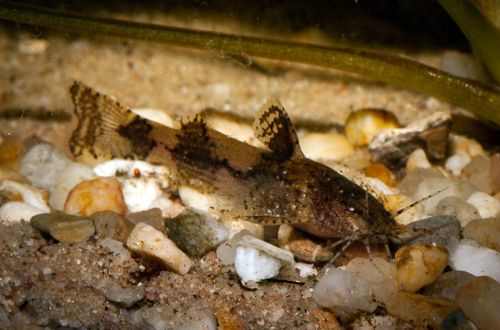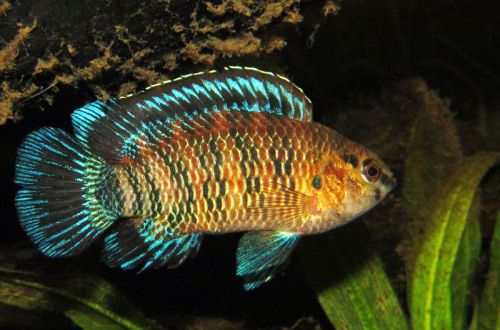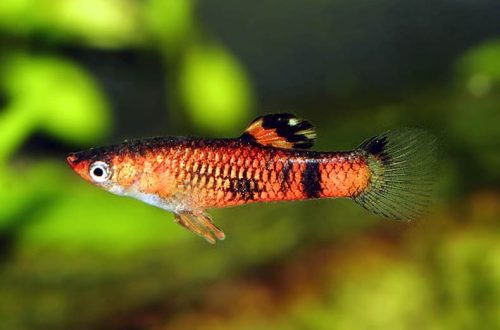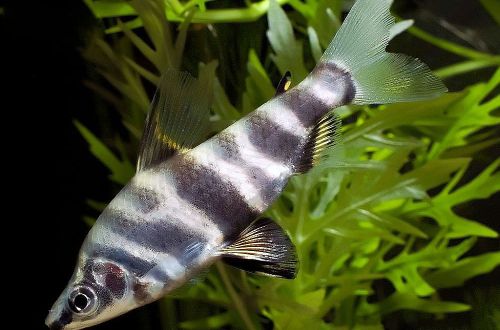
Somik Akisis
Catfish Akisis, scientific name Akysis maculipinnis, belongs to the family Akysidae (Akizovye). A miniature, if not tiny fish that will not be so easy to find in an aquarium due to its nocturnal lifestyle and love of hiding places. It is easy to keep and gets along well with other non-aggressive species.

Contents
Habitat
It comes from Southeast Asia from the territory of eastern Thailand in the province of Chanthaburi. It inhabits the basin of the river of the same name, preferring regions with fast currents and rocky substrates mixed with sand, gravel and rocks. As a rule, the water is clear with little suspension, except during the rainy seasons. Aquatic vegetation is usually absent.
Brief information:
- The volume of the aquarium – from 40 liters.
- Temperature – 16-24°C
- Value pH — 6.0–7.5
- Water hardness – 2–12 dGH
- Substrate type – sand and gravel
- Lighting – any
- Brackish water – no
- Water movement – moderate or strong
- The size of the fish is about 3 cm.
- Nutrition – meat products
- Temperament – peaceful
- Content alone or in a group
Description
Adults reach a length of about 3 cm. The fish has large pectoral and dorsal fins, the first rays of which have turned into sharp spikes with small amounts of poison. It is safe for humans, but the injection can be very painful. The head is large and flattened with 8 antennae. The color is gray-brown with dark pigmentation. Sexual dimorphism is weakly expressed, it is difficult to distinguish between male and female.
Food
They feed at dusk or at night in the bottom layer with small zooplankton. Catfish caught from the wild most likely will not accept dry food, although fish that have already appeared in captivity can behave in this way. Before buying, be sure to specify what products they are accustomed to. In any case, the basis of the diet will be high-protein foods, such as live or frozen brine shrimp, daphnia, bloodworms.
Maintenance and care, arrangement of the aquarium
The optimal size of the aquarium for a group of 3-4 fish starts from 40 liters. Catfish Akisis loves to dig in the ground and hide in crevices, therefore, in the design it is necessary to provide for a soft substrate and several shelters in the form of a pile of large stones, rocks and branching snags. Aquatic plants are optional. If desired, you can use artificial vegetation or unpretentious plants that can grow on a hard surface. For example, Anubias, Pterygoid Microsorum, Bucephalandra. If the plants are planted directly in the ground, then there is a high risk that the fish will dig them up.
Like many other fish that live in running water in nature, this species of catfish is very sensitive to water quality and does not tolerate the accumulation of organic waste. The aquarium must be equipped with all the necessary equipment, primarily a filtration system, and regular maintenance procedures must be carried out: replacing part of the water with fresh water, removing excrement, food residues, cleaning glass and design elements, etc.
Behavior and Compatibility
Peaceful calm fish, able to live both alone and in a group of relatives. As neighbors, non-aggressive fish of similar size are selected, such as parsing, zebrafish and the like.
Breeding / breeding
In the natural environment, during the mating season, the fish spawn directly on the ground without the formation of masonry. The eggs caught by the stream are sometimes carried away over considerable distances, which saves them from being eaten. This type of catfish does not have developed parental instincts, therefore, on occasion, they will definitely feast on their own offspring. The incubation period lasts about 3 days. Within a week, the fry that have appeared begin to swim freely in search of food.
The lack of visible signs of impending spawning and predation of eggs make it difficult to breed Akisis catfish in home aquariums. There is a high probability of missing the moment of reproduction, which also occurs at night.
Fish diseases
Being in favorable conditions is rarely accompanied by a deterioration in the health of fish. The occurrence of a particular disease will indicate problems in the content: dirty water, poor quality food, injuries, etc. As a rule, eliminating the cause leads to recovery, however, sometimes you will have to take medication. Read more about symptoms and treatments in the Aquarium Fish Diseases section.





